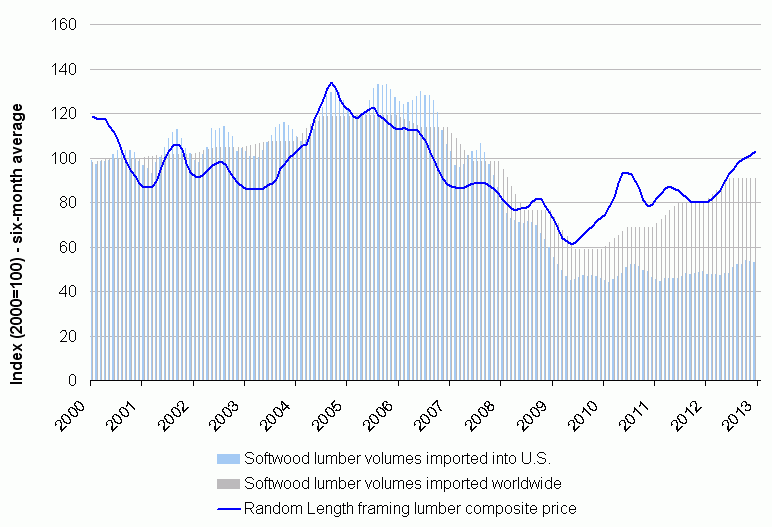Selective Cuttings
Chinese markets, U.S. prices?
July 9, 2013
The recovery of lumber prices over the past year has been remarkable. Even after the more recent move in price downward, the market appears to be acting differently now than it did prior to 2009. In a previous article, we noted that lumber prices were at one point as high as during the peak of the U.S. housing bubble. Recall that this peak involved seasonally adjusted U.S. single family housing starts at 1.6 million (they currently stand at 610 thousand), and Canada’s softwood lumber export volumes to the U.S. was more than 120% higher. Given these fundamental differences, it is reasonable to wonder if lumber is overpriced, or, to put it another way, if we should now expect higher prices for any given level of underlying demand.
The key here is to understand which underlying demand is relevant. Before about 2008 or 2009, measuring U.S. factors alone was enough to make a relatively strong relationship with U.S. prices. You can see this from how the price line tracks U.S. lumber imports (blue bars). After 2008, the price line starts tracking the global lumber imports (gray bars). The predominant difference between the U.S. imports and the global imports is the rise of China. With China providing an alternate outlet for North American producers to direct lumber, the U.S. is no longer the sole factor in price determination of lumber.
Macro economic factors influencing US softwood lumber price
Notes: (1) Since not all countries report softwood import quantities, we estimated global imported volumes from the aggregated volumes of European Union (external trade), Japan, China and the U.S., which have collectively accounted for 88-92% of global softwood imported value over the past decade.
(2) The index was based to the average of the monthly values in the year 2000, and therefore the indices do not start at 100 in January 2000.
In other words, the price of lumber in the U.S. now tracks global demand, rather than regional North American demand exclusively.

